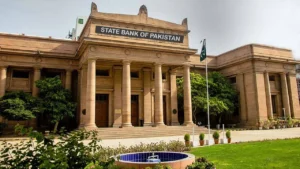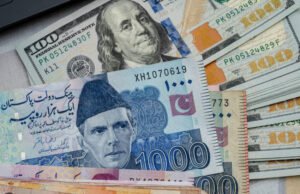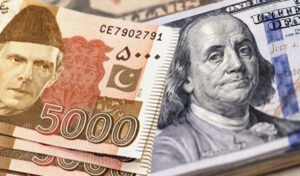The Deputy Finance Minister highlighted the urgent need for Pakistan to secure $100 billion in external financing over the next four years to fulfill its debt obligations. This plan includes rolling over $12.7 billion in deposits from countries such as China, Saudi Arabia, and the UAE, as stated by Minister of State for Finance Ali Pervaiz Malik during a briefing to the National Assembly Committee on Finance on Thursday.
He highlighted the urgent need for $12 billion in financing by 2027, in addition to the current $7 billion IMF program, and emphasized the development of a long-term economic policy to address the country’s precarious economic state. Malik noted that reducing the policy rate by just one percent could alleviate the loan burden by Rs. 320 billion.
Pakistan’s external account position continues to be vulnerable despite the latest International Monetary Fund (IMF) program, Minister of State for Finance Ali Pervaiz Malik informed the National Assembly Committee on Finance on Thursday. Despite the $7 billion IMF package aimed at stabilizing the economy, Pakistan faces massive financial requirements.
Finance Minister Muhammad Aurangzeb further elaborated on Pakistan’s financial challenges, stating that the country’s needs extend far beyond the current IMF bailout package. While $7 billion is expected from the IMF, an additional $5 billion must be sourced from commercial banks and other lenders. Aurangzeb also mentioned that assurances from friendly countries to roll over existing loans have been communicated to the IMF, which has prompted the IMF Executive Board to schedule further discussions on Pakistan’s program. Reforms in Pakistan’s power sector have also been shared with the IMF.
During the meeting, it was revealed that, despite a recent increase in foreign exchange reserves to $9.5 billion, the external account remains fragile. Although Pakistan’s debt-to-GDP ratio has decreased from 76.6 percent to 67.2 percent over the past five years, total loans have surged to Rs. 71 trillion, with an average annual increase of 14 percent. Of this debt, 66 percent is domestic and 34 percent is external.
The committee was informed of Pakistan’s external payment obligations, which amount to $18.83 billion this year, followed by $9.23 billion in 2026, $8.71 billion in 2027, $7.68 billion in 2028, and $6.88 billion in 2029. These figures do not include the repayment of deposits from friendly countries.
Committee members expressed dissatisfaction with the current economic situation, rising oil prices, and the ongoing strain on foreign exchange reserves. Hina Rabbani Khar, a committee member, remarked that Pakistan’s economy remains in critical condition due to the lack of sustainable economic strategies.
















